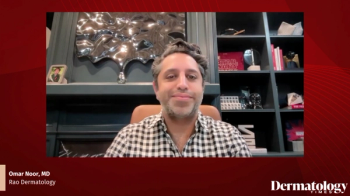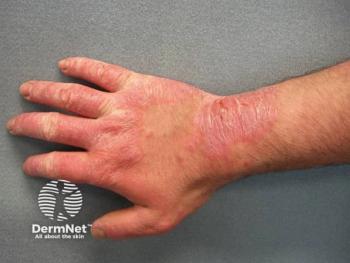
Soligenix Reports Positive Phase 2a Data in Behçet’s Disease
Key Takeaways
- Soligenix's phase 2a study of dusquetide for Behçet's Disease showed biological efficacy, with results comparable to apremilast in reducing oral ulcers and pain.
- Dusquetide demonstrated a 40% improvement in ulcer reduction compared to placebo, surpassing apremilast's 37% improvement.
The open-label trial showed dusquetide produced similar results to apremilast in reducing oral ulcers, pain, and ulcer duration.
Today, Soligenix, a late-stage biopharmaceutical company with a focus on developing products for rare diseases, announced that it has completed its phase 2a proof of concept study evaluating dusquetide (SGX945) for the treatment of Behçet's Disease. According to a n
The release stated the study was an open-label study designed to be "highly comparable," including study endpoints and inclusion criteria, to the previously published phase 3 study of apremilast (Otezla; Amgen) for the treatment of oral ulcers in Behçet's Disease. According to the company, dusquetide outcomes were compared to both apremilast and placebo arms in the phase 3 study.2 The proof of concept pilot study enrolled 8 patients age 18 or older with mild to moderate Behçet's Disease and active oral and/or genital ulcers. Patients received dusquetide twice weekly as a 4-minute IV infusion for 4 weeks, followed by 4 weeks of follow up.
Over 4 weeks, the company stated that dusquetide showed similar results to apremilast in reducing oral ulcers and pain, with comparable area under the curve (AUC), average ulcer count, and pain improvements. Notably, researchers found these benefits persisted through weeks 5 to 8, even after dusquetide treatment ended while apremilast treatment continued.
"We are pleased to have demonstrated biological efficacy in our SGX945 phase 2a trial in aphthous ulcers of Behçet's Disease," stated Christopher Schaber, PhD, president and chief executive officer of Soligenix, in the release. "Given the role of the innate immune system in ulcers associated with
In the previously reported apremilast study, the primary endpoint listed was the AUC of the mean number of ulcers versus time. Using this same endpoint after 4 weeks of treatment, researchers found the dusquetide treated group had a 40% improvement relative to the placebo group from the apremilast study. Comparatively, the company noted apremilast only showed a 37% improvement relative to placebo. Researchers stated the improvement in those receiving dusquetide was sustained throughout the 4-week follow up period, with 32% improvement evaluated at week 8 despite stopping treatment 4 weeks prior. In contrast, researchers found that those treated with apremilast, which was administered through week 12, had a 41% improvement at week 8.
Finally, the company stated that oral pain mimicked the results in the AUC measurement. According to the release, 7 out of 8 patients reported perceived benefit with dusquetide treatment, with patients commonly reporting reduced duration of oral ulcers, reduced overall number of oral ulcers, and reduced oral pain. One patient, who reportedly started the study with a punctuated skin ulcer, stated it was resolced during the 4-week treatment. Common adverse events for apremilast included diarrhea (41% of patients), nausea (19% of patients) and headache (14% of patients), none of which researchers stated were observed with dusquetide.
Schaber concluded, "With these results, we intend to embark on a reformulation of SGX945 to enable home-based treatment, using subcutaneous injection as used for example with weight-loss drugs. We are excited to expand dusquetide's development into different innate immune-related inflammatory conditions, such as Behçet's Disease, as a component of our long-term strategy to enhance the value of this unique compound. Behçet's Disease is an area of unmet medical need, with up to 18,000 people in the US, 50,000 in Europe, 350,000 people in Turkey and as many as 1 million people worldwide affected by this incurable and chronic disease. We look forward to undertaking reformulation and interacting with the health authorities in designing a follow-on placebo-controlled phase 2 study."
References
- Biological efficacy demonstrated in a phase 2 clinical trial of SGX945 for the treatment of Behçet's disease. News release. Soligenix. Published July 31, 2025. Accessed July 31, 2025. https://ir.soligenix.com/2025-07-31-Biological-Efficacy-Demonstrated-in-a-Phase-2-Clinical-Trial-of-SGX945-for-the-treatment-of-Behcets-Disease
- FDA approves OTEZLA® (apremilast) for the treatment of oral ulcers associated with Behçet’s disease. News release. Celgene. Published July 19, 2019. Accessed July 31, 2025. https://www.biospace.com/fda-approves-otezla-apremilast-for-the-treatment-of-oral-ulcers-associated-with-behcet-s-disease
Newsletter
Like what you’re reading? Subscribe to Dermatology Times for weekly updates on therapies, innovations, and real-world practice tips.



















